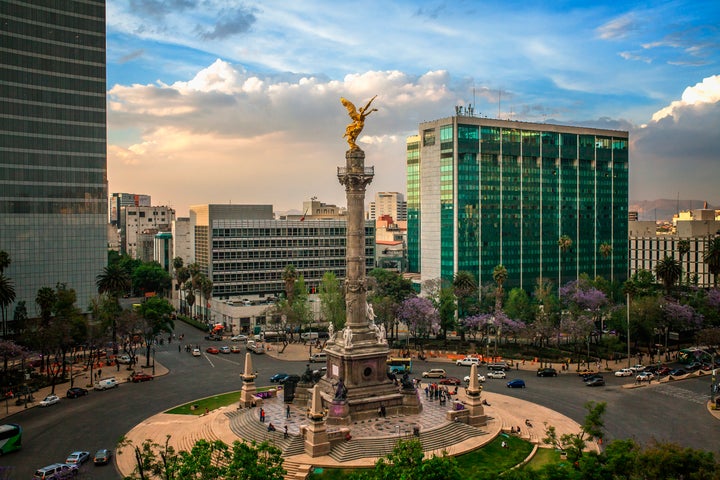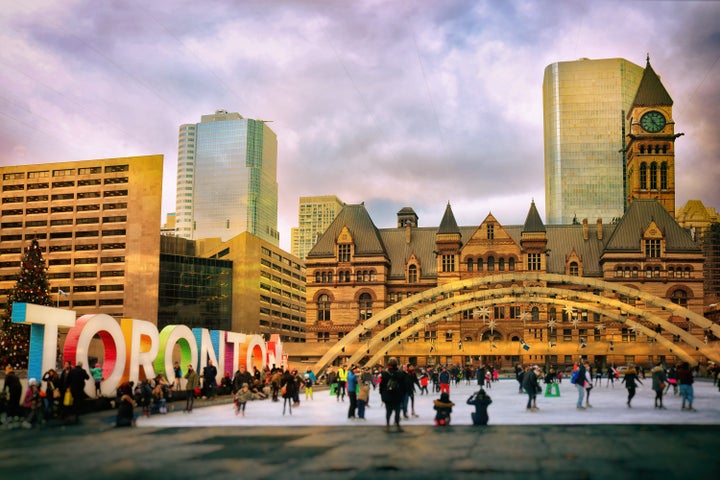All around the world people are turning to mental health services, like therapy, in order to tackle the issues of daily life like depression, anxiety and relationship dynamics.
But therapy means something different depending on where you are in the world. Curious how other countries compare to each other? From India to France and beyond, here is what therapy is like around the world.
The U.K.

What Stigma Is Like
The mentality around therapy has shifted in recent years, according to John Kenny, a transformational and relationship coach in Hertfordshire, U.K., who has worked in private practice with the U.K.’s National Health Service for the past 12 years.
“In the U.K. there has been a stigma placed on therapy for many years as we have a culture of the ‘stiff upper up’ to ‘just get on with things’ ‘deal with it yourself’ and ‘we are not a nation of moaners,’” he said, adding that the many people in the country are generally on the more private side and adhere to a “what happens behind closed doors stays there” mentality.
“Therapy has been seen as a weakness because of this, but this idea is slowly changing now that mental health issues are being seen as a major issue within the U.K.,” Kenny said.
Sarah Floyd with No Panic Sheffield, a U.K. charity that provides mental health assistance to those with anxiety disorders, says therapy is definitely more acceptable. “In fact, I’d almost be inclined to say it’s starting to become fashionable, just like having a personal trainer became fashionable eight to 10 years ago. Now it’s all about having some kind of therapist,” she said.
Popular Types Of Therapy
Cognitive Behavioral Therapy tends to be the preferred therapy employed by the NHS “due to the fact you can get statistical data and quantify any success,” Kenny said. This type of therapy encourages a patient to change their thinking and behavior patterns through exercises in sessions and outside of them.
“Accessing psychotherapy in the NHS is mostly through being referred by your general practitioner,” said Patricia Hunt, a psychotherapist and international officer of the U.K. Council for Psychotherapy. This is mainly used to treat anxiety and mild depression. “The initial offer is usually six sessions of 50-60 minutes, and extended where needed to 12 sessions.”
Patients also have the option to seek out therapy through a private practitioner, which covers a much wider range of therapeutic approaches for people dealing with depression, relationship issues, trauma and more, Hunt said. These can also be offered on a short or long-term basis.
Common Issues
Kenny has seen a lot of people in the U.K. turn to mental health services to treat anxiety, depression and relationship issues.
“The world is changing and us humans don’t do well with change, hence the rise in people seeking out help [through therapy or life coaching],” added Floyd.
Costs
The NHS provides free therapy sessions to patients, however, they “currently have waiting lists that can go on for over a year,” according to Kenny.
Hunt said the cost of private psychotherapy typically ranges from 25 to 50 euros (around $27 to $55) per session, but many psychotherapists have a variable rate to make psychotherapy available to those who need it. She added that psychotherapy sessions are not typically covered by insurance in the U.K., but the U.K. Council for Psychotherapy has worked in collaboration with other psychotherapy and counseling organizations to encourage health insurance companies to include therapy in coverage.
Mexico

What Stigma Is Like
Over time, there has been a greater acceptance of therapy in Mexico, said Jaime González-Paullada, a psychologist with R&A Psicólogos. He noted that while you can still hear comments such as “psychotherapy is for crazy people” or “therapy doesn’t work,” people are becoming more aware of what therapy represents and its importance.
“Psychotherapy is more distributed in urban than rural areas, and also in major cities,” he said. There are also public institutions throughout the country that “offer a very affordable service of psychotherapy for the population,” González-Paullada said.
Popular Types Of Therapy
There is typically a heavy focus on CBT in Mexico, said Claudia Vidal Ortiz, a family therapist in Mexico City.
She added that long-term therapy is typically more expensive and many people can’t afford it. However, the public system does provide some psychological support in their clinics. Women’s organizations also provide psychological support, particularly around issues of violence.
Common Issues
“Some people attend therapy due to a specific issue like depression … others may go regularly like every week or sporadically like once a month just to check in or have some follow up with a few topics,” González-Paullada said.
Costs
Insurance companies don’t cover therapy services in Mexico, nor do any government dependencies, González-Paullada said. “So every person attending therapy pays their own sessions from their pockets.”
He added that there are several foundations, hospitals and colleges that offer therapy at a low cost (around 50 pesos, or about $2.50) as well as some private clinics. “The cost can range can vary from 300 to 2,000 pesos ($15 to $100). It depends on several factors like the zone or the specialization,” González-Paullada said.
Brazil

What Stigma Is Like
“Therapy still has a stigma here,” said Desirée Cassado, a psychologist who specializes in cognitive behavioral therapy in São Paulo, Brazil.
Cassado also noted that therapy is more common in urban areas like Rio de Janeiro. “The populations of these cities are richer and have more access to better professionals,” she said.
Juliana Helena Bruno Machado, a psychologist with São Paulo’s Núcleo Interface said at this point, “people would rather talk to their pastors and priests” rather than see a mental health professional.
Popular Types Of Therapy
“Most of Brazilian psychologists tend to work with psychoanalysis and other humanistic approaches,” Cassado said. (Psychoanalysis is essentially based on the thought that people are motivated by unrecognized wishes or desires that stem from your subconscious.)
Common Issues
Cassado noted that people tend to come for an appointment when they are experiencing major issues with depression, anxiety, divorce and other relationship issues. Usually patients come in through referrals. “Brazil, especially São Paulo State, has one of the highest rates of depression and anxiety disorders,” she said. And Brazilian patients tend to stay in therapy for somewhere between six to 18 months, she added.
Costs
Cassado said psychotherapy is typically private and expensive. A few years ago, a law passed demanding the inclusion of therapy in private health insurance plans. “The state also offers therapy and some mental health assistance, but they tend to be insufficient for the high demand,” she explained.
According to Cassado, private therapy appointments can range from 87 to 501 Brazilian reals ($20 to $120), depending on the country’s region and the expertise of the therapist. Machado explained that the public services for mental health provided in hospitals and psychiatry wards often have lengthy wait times for treatment, making private therapy, “a high-cost treatment.”
“Some insurances cover part of the costs of the sessions, others have their own affiliated therapists,” Cassado added. With coverage, people usually pay as little as 42 reals ($10) per session to the therapist and sessions are limited to 40 a year.
France

What Stigma Is Like
The popularity of therapy in France is very generational, said Anastasia Piatakhina Giré, an integrative psychotherapist practicing in Paris. She noted that the country’s older population still has a stigma around the practice.
“So they would probably mostly go if there is a crisis like an illness or cancer,” she said. The younger folks, however, are much more open to mental health treatments. “They don’t wait until a crisis really happens. They maybe do more maintenance therapy,” Giré said. “The French definitely do less therapy than Americans. That’s for sure. But it’s slowly catching on.”
Popular Types Of Therapy
The main type of therapy in France, according to Giré, is psychoanalytical psychotherapy.
This is “a psychotherapy approach rooted in psychoanalytical theory and tradition. The closest by American standards is probably psychodynamic psychotherapy,” Anastasia said. The therapist will have the client acknowledge and understand any contradictory feelings and repressed emotions they may be experiencing. This type of approach is often used to treat depression.
Common Issues
People go to therapy for many reasons, but the main struggles Giré has observed in her practice are relationship issues, anxiety, depression and an existential crisis. “Going through any kind of change, which can be age, retirement, losing a job or losing a family member, can also trigger a lot of new responses,” she said.
Giré’s youngest clients are typically in their 30s, a generation she said that is embracing therapy much more than their predecessors. “This group comes in for a lot of work-related issues. Often there is some kind of relational difficulty or relational dynamic at work. And usually, there is also something in their private lives that reflects the same issue,” she explained.
Costs
Giré told HuffPost that people can see a psychiatrist for free through France’s healthcare system. This is typically a 10-minute appointment that will simply involve the doctor prescribing them with a dose of medication.
Some psychiatrists do therapy sessions through this program as well, however, these are harder to find. If a person is referred by their general practitioner for a specific ailment, like depression, they can see a psychologist for a limited number of sessions to treat those conditions. Most of the cost for these sessions may be covered by the public health care system, and private insurance, which can be offered by employers, can make up the difference.
Because of certain laws, some therapists ― Giré is one of them ― may not fall under this coverage umbrella. Anyone who wants to seek out private individual therapy with a psychotherapist in France must pay out of pocket to do so, Giré said.
“If someone goes to a psycho-practitioner or psychotherapist, that’s the private session where they can go to for anything like relationships, life issues and more of a daily maintenance. And those are out of their pocket, typically ranging from 70 to 120 euros ($77 to $132) per 50 minute session,” she said.
China

What Stigma Is Like
Therapy wasn’t really acknowledged in China until a couple of decades ago, said Steven Vinay Gunther, a practicing psychotherapist in Shanghai. It’s grown in popularity in the last 15 years or so, especially through psychological workshops.
“There are people who get on the circuit and go from one workshop to the other,” he said, adding that therapy in China is not completely developed as a profession yet. “But there’s increasing interest, partly because of the increasing middle class with disposable incomes and common psychological problems that people no longer feel they have to suffer through but find there is something that they can do about it,” he said.
The practice is definitely more popular in the bigger cities like Hong Kong and Shanghai, said Titi Hill, a counselor and psychotherapist in Shanghai. Hill noted that “larger urban areas have more services available to the public.”
Popular Types Of Therapy
Gunther has seen the most buzz around workshop structures (think group therapy-type settings). “We’re seeing a wide range of people attend these workshops ― housewives, business people, some professionals. I always get a mix at mine,” he said.
Private therapy, he said, is much less common and caters to a very small number of people who are willing to do it and can afford it. “It’s increasing, but still much smaller than the workshop market,” he said.
Common Issues
Gunther said patients find therapy for a number of reasons. “Some of the main sources of suffering are unaddressed trauma from the cultural revolution,” he said, adding that the family-rearing practices and growing up without a main caregiver can also create problems.
He added that relationship problems are also common, particularly with having extended family play a role in an adult child’s lifelong decisions, such as who the adult child will wed. He also treats patients for intimacy issues.
“Stress also brings a lot of people in, because they are a hardworking and work long hours,” Hill added.
Costs
Workshops range in price. It depends on who it’s with and things. It can be anywhere from 1,429 to 2,858 yuan, or $200 to $400, a day, Gunther said.
“I run smaller ones but often there are like 20 to 30 people in some of mine. Often there are 60 to 70 people, sometimes hundreds in these workshops though,” he said.
Gunther added that a very small number of people, like some expats, might have some insurance, but typically private therapy is paid for out of pocket. Prices can range from $30 an hour for a local therapist to $400 an hour for a more credentialed expert.
Other Parts Of Asia

Hill noted that therapy differs greatly across other parts of Asia. Japan, for instance, “is very much a culture where people don’t express on the outside what they feel on the inside. So that produces a very complex set of issues … often people in Japan will have issues that they don’t ever talk to anybody about,” Gunther said.
Gunther said that group therapy tends to be the popular modality in Japan and estimated that sessions likely range from 4,250 to 21,252 yen ($40 to $200).
In Thailand, an outpatient therapy session would likely be a minimum of 1,500 baht ($49), said Reeya Chaicharas, head of marketing for The Dawn, a mental health services center in Chiang Mai, Thailand.
Canada

What Stigma Is Like
Therapy in Canada is widely accepted, especially in larger cities. “Due to everyone having provincial health insurance, people are much more open and accepting of private pay therapy as it is one of the few things that they do have to pay for,” said Andrew Sofin, president of the Canadian Association for Marriage and Family Therapy, who offers psychotherapy for couples in Montreal.
Sofin noted that the majority of Canadians who are experiencing something like depression or trauma will seek out some form of therapy either through the public or private system. “There is a subsection of the population, mainly in the urban areas, where people will also go to therapy for maintenance, vent about their day or just check in. This therapy is only available in the private pay system,” he added.
Popular Types Of Therapy
Canada offers a variety of therapy options, with approaches ranging from psychoanalysis, to music therapy, to art therapy, to sand play.
“We all learn differently and the ways in which we express ourselves vary as well. The range of modalities available reflect these differences,” explained Gord McLeod, president of the Canadian Association of Psychodynamic Therapy.
Common Issues
“People sometimes consider therapy as an option when life events stir up emotions and thoughts that interfere with one’s normal day-to-day activities,” McLeod said. He added that sometimes people recognize a pattern of behaviors that is not healthy but are unable to make the needed change and that people also seek therapy if they’re experiencing more anxiety than normal.
Costs
If you are accessing therapy through the provincial health care or social services system, it is free. If it is through a private pay provider, it can range from 60 to 300 CAD (around $45 to $224) depending on where you live and the expertise or popularity of the provider.
“In most big cities it will range from 100 to 150 CAD, or $75 to $112, for an experienced therapist. Many providers, as well as private and partially publicly-funded agencies, will also offer a sliding fee scale based on the client’s income,” Sofin said.
India

What Stigma Is Like
In India, the concept of therapy itself is quite new and unfamiliar for most people, said Vandita Dubey, a clinical psychologist who practices in the Indian Himalayas and Gurgaon. “When people seek therapy in India, they are typically seeking advice,” she said.
Popular Types Of Therapy
Dubey said people are not well-versed with the different therapy modalities, so there isn’t necessarily one preferred method. Psychotherapy, while popular in other countries, isn’t totally well-known, either.
“There is no regulatory body at the state or national level or licensing requirements in place,” Dubey said. “Many practitioners of therapy in India have no professional training or may have done a one-year distance program in counseling, at the most.”
Instead, therapy in India typically includes anything from past life regression (which focuses on hypnosis and guiding a patient back in time to face earlier memories) to NLP (neuro-linguistic programming, which incorporates language and sensory-based interventions and behavior-modification techniques). There are professionals who do use CBT, psychoanalysis and other research-backed methods as well.
Common Issues
Most people who seek therapy expect a professional to provide life advice or help solve a problem, Dubrey said.
She added that people in India looking for help with depression or anxiety often expect to be prescribed medication of some sort when they see a professional. Families also typically want to know what’s being discussed, which may impede progress.
“People also turn up looking for treatment for someone else who has not come to the therapist’s office ― a child, spouse, parent, etc. ― and want the therapist to provide a diagnosis and prescribe some form of treatment for the absent person. In general, there is still a great deal of stigma associated with seeking therapy, even in the big cities,” she explained.
Costs
The clients typically pay out of pocket. Insurance almost never covers psychotherapy.
“However, a directive issued by the government in 2018 has asked insurance agencies to provide coverage for mental health ― the time frame and details of coverage have not been specified,” Dubey said.
“The typical range of therapy rates in India is approximately $7 to $45 per therapy hour,” she added.
Italy

What Stigma Is Like
Therapy in Italy has not been completely normalized quite yet, said Paolo Molino, a psychologist and psychotherapist in Florence.
“The culture imposes that you have to have a problem to justify the fact that you are in a therapist’s practice,” he said, noting that it isn’t generally understood that seeing a therapist supports for your overall well-being, but rather there’s “a culture of ‘I have a damage, let me go and fix it,’” Molino said.
But Francesco-Maria Serino, founder of Doctors in Italy, a digital platform that connects patients to English-speaking doctors and therapists, noted that times are slowly changing and psychotherapy is becoming more accepted.
“It is still difficult to find psychotherapists in small towns but, at the moment, all the biggest cities in Italy have a good number of psychotherapists working either in public services or private offices,” he explained.
But despite the increasing number of psychotherapists, there is definitely still a stigma around seeking a therapist.
“People commonly believe that psychotherapy is only appropriate for very severe conditions, and they are reluctant to ask for psychological help even when it is direly needed,” he said, adding that one of the reasons for this persisting stigma is that there is not enough media coverage on the importance of seeking out therapy.
Popular Types Of Therapy
The most common types of therapy in Italy are psychodynamic therapy and CBT, Serino said. He added, however, that all other common approaches can be found in Italy.
“Individual therapy is definitely more popular than group therapy, possibly also in connection with the stigma of seeking help and the desire to keep it as private as possible,” he said.
Common Issues
In Italy, people seek out therapy in a private setting mostly for issues related to anxiety, depression, eating disorders and relationship conflicts.
“When there is a diagnosis of psychosis or personality disorders with severe emotional dysregulation, the public services are usually primarily involved in the treatment,” Serino said.
People often start psychotherapy in private settings to tackle specific issues ― like a recent panic attack, or the end of a relationship or a divorce ― but then they realize that psychotherapy can also be a tool for growth and self-discovery, he added.
“People who have gone through psychotherapy find it easier to come back to seek further help also for other minor issues and in different phases of their life. It is unusual, however, to meet people who continue therapy for maintenance,” Serino explained.
Costs
The cost of a session in a private setting can vary from 50 euros to 150 euros ($55 to $165) and “the majority of people undergoing therapy in a private office have to pay out of pocket,” Serino said.
He added that very few Italian insurances cover psychotherapy and mental health at the moment. People do have the option of using low-cost public psychotherapy services, but the downside to this is that there’s often a waiting list and inflexible appointment times.
You Should See Someone is a HuffPost Life series that will teach you everything you need to know about doing therapy. We’re giving you informative, no-B.S. stories on seeking mental health help: how to do it, what to expect, and why it matters. Because taking care of your mind is just as important as taking care of your body. Find all of our coverage here and share your stories on social with the hashtag #DoingTherapy.
Credit: Source link